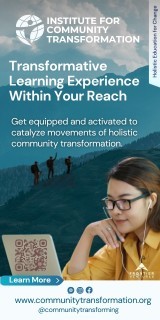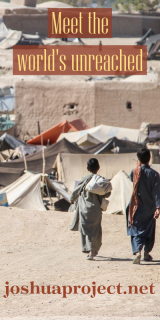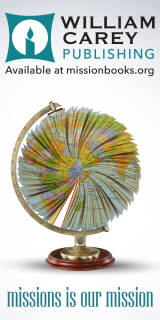Brazil, A Sleeping Giant Awakens
An AD 2000 Report

Introduction
Brazil, is known as the largest Catholic country in the world, but it is also where more people attend evangelical churches than Catholic on any given Sunday. Brazil has become the third largest evangelical community in the world.
Perhaps in no other country of the world has the evangelical church grown as much in percentage and in numbers as in this century.
The latest official census of Brazil as of 1990 recorded 35 million Protestants compared to 12 million ten years prior.
One new church that is only 16 years old has 14 radio stations, four TV stations and six million members. It is the second largest communication network in Brazil, with missionaries currently serving
in 25 different countries of the world.
Last year over 300,000 Brazilians participated in the March for Jesus. The leader received a congratulatory letter from the President of Brazil for the orderly manner in which the march was conducted. Plans are in place for one million Brazilians to participate in the March for Jesus on the Day to Change the World, June 25, 1994.
Though faced with numerous challenges, the impact of the Brazilian church on world evangelization in this decade is as great as any country in the world, as this report will suggest.
I. Praying Through the Window--A Brazilian Update
At 1:30 p.m. Sunday, October 17 at the Prayer Building of the Valley of Blessing of the Antioch Mission, state of Sao Paulo, you could hear the cries and groans of prayers from a distance. As you enter, above a large world map you read the words: "Pray for 25 million intercessors to be Praying Through the Window." The 10/40 Window is clearly marked off with tape and a banner above with the words: "Focus your prayer here."
Fifteen prayer warriors could be seen kneeling on cushions on either side of the large building, pouring out their hearts with tears and cries; much like Ana, the mother of Samuel, must have done. In each of the seven prayer cells you see the verse "There is nothing impossible for God," as well as the October 1993 Calendar for Praying Through the Window. Cell number one serves as a permanent 24 hour-a-day vigil for world evangelization and this month, for the Prayer Through the Window.
This was the first building to be constructed at the sprawling Valley of Blessing, the divinely anointed brain-child of founder and president, Jonathan dos Santos. Jonathan has pioneered the mission's vision in the country of Brazil and continues to serve as one of the most influential leaders in the blossoming vision for cross-cultural missions to the unreached peoples of the world. Jonathan served on
the board of the Missions Congress and works with the Brazilian AD 2000 & Beyond Movement.
According to the Executive Secretary of the Antioch Mission, Carlos Mas, and the Executive Secretary of the Brazilian AD 2000 Steering Committee, Paulo Mendes, information on the 10/40 Window and Praying Through the Window has been presented in most, if not all of the Christian magazines in Brazil. Both of these men independently estimate that at least one million Brazilians are participating in the Prayer Through the Window this month.
II. 50,000 New Churches and 50 Million Adherents in One Denomination by AD 2000
No single denominational initiative in any country of the world compares with the scope and vision of the Assemblies of God in Brazil. Jose Wellington, president of the Assemblies of God and speaker at the missions conference answers questions related to this initiative.
What is the Decade of Harvest?
Jose: The Decade of Harvest is a project of the Assemblies of God all over the world committed to joining together in the divine and urgent purpose of evangelising the world in this last decade.
What are its Objectives?
Jose: Our objectives are:
- Increase the awareness among workers and believers that we are living in a decade of harvest.
- Prepare an accurate picture of our activities, workers and efforts and encourage plans to reach their goals; mobilizing the church for a decade of harvest.
- Ask God to renew our gift of evangelism and to pour out His Holy Spirit on us. I understand you have completed a careful nation-wide survey project in 1992.
What were the results?
Jose: Indeed, we took the easiest approach we could. We used a form with 10 questions which we sent to over 7,000 pastors. We gave each church 60 days to send in the results. We found that there was an average of 77 members for each worship location and an average growth rate of over 8% per year. On the base of the survey we conclude that there are approximately 12 million members as of 1992 in 90,000 worship centers. Interestingly, the highest annual growth rate was in the Amazon area with almost 17%.
What are your numerical expectations for the future?
Jose: We hope to:
1. Raise up 3 million intercessors.
2. Win 50 million people to Christ.
3. Prepare 100,000 workers who are ready to collect the harvest.
4. Establish 50,000 new churches.
5. Send new missionaries to other countries of the world.
III. Largest Nation-wide Brazilian Missions Conference Ever
From October 18 to 22, 1993 in the city of Caxambu, in the state of Minas Gerais, participants made their way by bus and by car from around the country. It took the participants from the city of Sao
Paulo more than six hours by bus. Yet almost all would agree that this was indeed worth the effort. Eight hotels were filled with the delegates. One of these hotels, appropriately called, GLORIA, "Glory," was where the meetings were held. This conference was just one more important step to bringing the Brazilian church into full partnership in world missions.
Indeed, Brazil has become a significant force for missions in the world today. According to the research completed by Ted Limpic of SEPAL in 1992, the number of missionaries has tripled in the last five years. He attributes the primary cause for the rapid growth to the COMIBAM conference held for the Ibero-American world in Sao Paulo in 1987. Of the 67 mission agencies, 24 are focused in Brazil and 43 outside of Brazil.
The main organizing body of the Congress in Caxambu was the Association of Cross Cultural Missions which links many of those serving in the mission agencies. The General Secretary is Paulo Mendes. Paulo was also selected by the Brazilian AD 2000 Steering Committee in December 1992 to be the executive secretary of the Brazilian AD 2000 Committee.
An Interview with Paulo Mendes
What was the theme of the missions conference?
Paulo: Mobilization, Training and Cooperation to the year 2000. Mobilization, because we see an enormous potential of the evangelical church in Brazil. All the church needs is to be mobilized. Training, because we are finding that God is calling many to the unreached peoples of the world, and we must be better prepared. We can no longer be sending our young people as sheep among wolves. Cooperation, because you can no longer do missions in an isolated manner. The diversity, complexity and scope of the task demands cooperation. The phrase "To AD 2000" indicates the crucial moment in which we find ourselves. It underscores the urgency of the hour. Something must happen by the end of this century and millennium.
Who was at the congress?
Paulo: 1,100 people participated from all 26 states of Brazil and practically all the denominations. Of those who attended, 40% were women and 60% were men. Of the 1,100 participants, 25% were pastors, 12% were missionaries, 10% were young people and seminary students and 7% were seminary professors. The remainder were denominational leaders, professionals and business people.
Who were the organizing and supporting organizations at the Congress?
Paulo: It was co-sponsored by the Brazilian Association of Evangelicals, the Association of Mission Agencies (AMTB), COMIBAM and the AD 2000 & Beyond Movement. The AMTB were the organizers of the Congress.
IV. The Developing Brazil AD 2000 Movement Shows Enormous Promise
Two leading members of the AD 2000 Brazilian Steering Committee answered questions regarding the development of the vision in Brazil; Paulo Santos and Paulo Mendes.
"AD 2000 comes to Brazil at a crucial time to unite the body of Christ in a common vision. We are excited to see all the major denominations and Christian organizations catching the vision and expressing interest in cooperating to fulfill the vision in Brazil."
--Paulo Mendes.
How did the AD 2000 Movement get started in Brazil?
It was on occasion of the last Annual Assembly of the Association of Cross-cultural Mission Agencies in Brazil held in November of 1992.
Following the national assembly, consultations held in Sao Paulo and Belo Horizonte effectively launched the AD 2000 Movement in Brazil. After the second meeting an AD 2000 Steering Committee was established.
What have been the major activities so far?
In April 1993 AD 2000 co-sponsored a consultation on unreached peoples along with COMIBAM and the AMTB. At the consultation 200 unreached people groups were adopted with the goal of establishing churches among them by the year 2000, using Brazilian missionaries.
A follow-up consultation on the adopting of the 200 unreached people groups is scheduled for April 1994 . Profiles are being prepared for 500 groups.
We have published over 10,000 copies of the 10/40 Window Booklet, 11,000 copies of the "Praying Through the 10/40 Window" October prayer calendar and widely distributed the AD 2000 video in the Portuguese language.
Paulo Santos, AD 2000 committee member and a leading evangelical in Brazil, adds: "I believe the AD 2000 Movement will have many good things to offer to the church in Brazil. It is helpful for these Assembly of God pastors to be exposed to other perspectives of the body of Christ as is happening at this congress. Lausanne II was of great value to me. In fact, I sold a piece of property to pay for my
airline ticket to get there. My vision was expanded as a result of networking with others and hearing their reports."
The Brazilian AD 2000 Committee has already carefully reviewed and recommended the delegates from Brazil for the Global Consultation on World Evangelization by AD 2000 & Beyond (GCOWE '95) to be held in Seoul, Korea, May 17-26, 1995.
Who are the members of the AD 2000 Steering Committee and how are you structured?
Osvaldo Prado, Jonathan Ferreira dos Santos, Wilson Lopes do Couto, Bertil Ekstrom, Paulo dos Santos, Davi Alencar and Lazaro Aguiar. The executive secretary is Paulo Mendes. They are assisted by regional adjunct secretaries including Isael de Araujo in Rio, Carlos Mas in Sao Paulo and Luiz Ferreira in Belo Horizonte.
There are also leaders identified for each of the resource networks in Brazil that comply with the international AD 2000 Movement. In addition, they have established additional networks on the March for Jesus and Tentmakers.
What are the immediate plans for the months ahead?
We have begun to make plans to meet with the prospective participants for GCOWE '95. Osvaldo Prado has been chosen to become the new AD 2000 National Coordinator, taking the place of Paulo Mendes who will be going to Portugal where he will encourage the development of the AD 2000 process. Luiz Ferreira has accepted the invitation to work full time with the committee with the support of his local Presbyterian church in Belo Horizonte and the AVANTE mission led by Ken Kudo. We are making plans to negotiate with the travel agencies
and airlines to plan for the flight to Seoul and to raise the funds in Brazil for the international travel of the participants.
V. Why the impact of the Brazilian church on world evangelization in this decade is as great as any country in the world
In reflecting on the remarkable developments in Brazil, my conviction is that the Brazilian church has as great a potential for making an impact on world evangelization in this decade as any country of the world, for the following reasons:
1. The Size of the Brazilian Church
In his latest edition of Operation World, Patrick Johnstone notes that Brazil has now the third largest evangelical community in the world, after the USA and China.
2. The Explosive Growth of the Brazilian Church
The evangelical church has grown from 100,000 in 1900 to an astonishing 26 million today, most of the growth taking place in the last ten years. One denomination alone has identified 91,000 worship centers in a survey done in 1992.
3. The leadership of this evangelical movement is Brazilian
When you ask the question: "Who are the evangelical leaders of greatest influence in Brazil today?," you hear names like Caio Fabio d'Araujo Filho, Jose Wellington, Nilson Fanini, Bertil Ekstrom, Lidia Menezes de Almeida, Jonathan dos Santos, Paulo Mendes, Paulo dos Santos, Orivaldo Pimentel, Waldemiro Tymchak, Ari Veloso, Osvaldo Prado, Waldemar Carvalho, Jeremias P. Silva, Edison Queiroz and Antonio Carlos Nasser. They are all Brazilians. Although there are more than 2800 foreign missionaries in Brazil, the leadership of the evangelical church and national missions is in the hands of Brazilians.
4. The AD 2000 vision of the Brazilian Church
The evangelical church has taken up the AD 2000 vision. For example the largest denomination, with about 40% of the total number of evangelicals in the country, has a goal of 50,000 new churches and 50 million adherents by the year 2000. A strong national AD 2000 Steering Committee has been established and has begun to steer strategic activities.
5. Preparation for Cross-cultural Missions in Theological Schools and Special Training Centers
Theological seminaries are giving growing emphasis to the preparation for missions. The Baptist Theological University in Sao Paulo has opened a department on missions to its 500 students. At the Brazilian Baptist Seminary a program on missions is being offered to its 200 students.
Centers for training missionaries, such as the Missao Antioquia, the Evangelical Center of Missions in Vicosa, Minas Gerais, the YWAM and WEC bases in Belo Horizonte, Lidia Almeida of Bethel Institute in the North East of the Country and others are arising around the country.
Today there are nearly 6,000 students in seminaries around the country, plus another 4,000 in Bible Institutes and another 1,200 in theological education by extension.
6. The Character of the Brazilian
Brazil is a social melting pot of many different races. There is almost a complete integration of society. Consequently you can find people that look like and can relate to almost any country in the world. In addition, Brazilians are a vibrant and dynamic people. They are basically optimists. Their music and language are upbeat. They are typically well received in other countries. The Christians
demonstrate a great amount of faith through their living and service. In particular, they are being very effective in the Muslim world, with great potential for expansion.
7. A Popular Theology with Emphasis on the Lordship of Jesus Christ
A central theme among evangelicals in Brazil is that the Lordship of Jesus Christ in everything. He needs to be the Lord of all the peoples of the world. Young people generally take their faith seriously. They are being influenced by evangelical leaders who are demonstrating from the Scriptures that the Lordship of Jesus Christ calls for obedience to the mandate of world missions. These young people are an enormous potential for missions in the years ahead.
Conclusion
The Evangelical Church in Brazil is experiencing a phase of remarkable growth, increasing commitment and expanding global impact through their cross-cultural missions program. Their contribution to the vision of a church for every people and the gospel for every person by the year 2000 shows enormous commitment and promise.
It is clear that what we will see in the remaining years of this decade is the increased mobilization of already mobilized churches, increased preparation of the workers for cross-cultural missions to reach the unreached peoples of the world and new levels of cooperation in the process. To God be the glory great things He has done and is doing.
Luis Bush is the International Director of the AD 2000 & Beyond Movement. You may contact him at the
AD 2000 & Beyond Movement
2860 South Circle Drive, Suite 2112
Colorado Springs, CO 80906
or phone 719-576-2000







comments